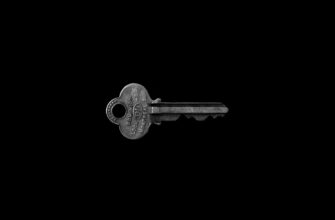🎮 Level Up with $RESOLV Airdrop!
💎 Grab your free $RESOLV tokens — no quests, just rewards!
🕹️ Register and claim within a month. It’s your bonus round!
🎯 No risk, just your shot at building crypto riches!
🎉 Early birds win the most — join the drop before it's game over!
🧩 Simple, fun, and potentially very profitable.
- Why Cold Storage Encryption is Non-Negotiable for Crypto Beginners
- Understanding Cold Storage: Your Crypto Fort Knox
- Why Encryption is Your Ultimate Security Layer
- Step-by-Step: Encrypting Your Cold Storage Wallet
- Encryption Best Practices: Beyond the Basics
- Deadly Mistakes to Avoid
- Cold Storage Encryption FAQ
- Your Security Legacy Starts Now
Why Cold Storage Encryption is Non-Negotiable for Crypto Beginners
Imagine your life savings disappearing with a single click. That’s the harsh reality for cryptocurrency holders who neglect wallet security. As digital assets become prime targets for hackers, encrypting your crypto wallet in cold storage isn’t just smart—it’s essential armor for your financial future. This beginner-friendly guide demystifies the encryption process step-by-step, transforming complex security concepts into actionable protection for your digital wealth.
Understanding Cold Storage: Your Crypto Fort Knox
Cold storage keeps cryptocurrency completely offline, isolated from internet vulnerabilities. Unlike “hot wallets” connected to the web, cold storage acts like a digital vault:
- Hardware wallets: Physical devices (e.g., Ledger, Trezor) resembling USB drives
- Paper wallets: Printed QR codes containing keys (increasingly outdated)
- Metal seed plates: Fire/water-resistant engraved recovery phrase backups
While cold storage blocks remote attacks, physical theft remains a threat. That’s where encryption becomes your final defensive layer.
Why Encryption is Your Ultimate Security Layer
Encryption scrambles your wallet data into unreadable code that requires a unique key (your passphrase) to unlock. Consider these critical benefits:
- Thwarts physical theft – Stolen devices become useless without your passphrase
- Prevents unauthorized recovery – Even with your seed phrase, encrypted wallets remain locked
- Creates hidden wallets – Advanced users can set up decoy accounts
- Future-proofs security – Quantum-resistant algorithms combat next-gen threats
Step-by-Step: Encrypting Your Cold Storage Wallet
Preparation Checklist:
- Hardware wallet (initialized & updated)
- Recovery phrase stored offline
- Private workspace without cameras
Encryption Process:
- Connect wallet to secure computer via USB
- Open manufacturer’s application (e.g., Ledger Live)
- Navigate to Security Settings > Passphrase
- Select “Attach to PIN” option
- Create a 6-64 character passphrase:
– Combine random words (correcthorsebatterystaple)
– Mix uppercase, numbers, symbols (@7Moon$Walker!)
– Avoid personal information - Verify passphrase by re-entering
- Assign to new PIN (different from primary PIN)
- Confirm setup and disconnect wallet
Critical: Transfer small amounts first to test recovery before moving significant assets.
Encryption Best Practices: Beyond the Basics
- Passphrase Strategy: Use diceware method for true randomness
- Storage Protocol: Keep passphrase separate from recovery phrase (e.g., bank vault + home safe)
- Verification Routine: Test access quarterly
- Multi-Sig Enhancement: Combine encryption with 2-of-3 signature wallets
- Firmware Updates: Always install security patches immediately
Deadly Mistakes to Avoid
- ❌ Storing passphrase digitally (cloud notes, emails)
- ❌ Using weak phrases (“password123”, birthdays)
- ❌ Sharing encryption details with recovery phrase
- ❌ Skipping test transactions
- ❌ Ignoring wallet firmware updates
Cold Storage Encryption FAQ
Q: Can I recover funds if I forget my encryption passphrase?
A: No. Unlike your seed phrase, passphrases aren’t recoverable. Treat them like irreplaceable keys.
Q: Does encryption slow down transaction speed?
A: Negligibly. Decryption happens locally in milliseconds during wallet access.
Q: Are encrypted wallets immune to physical damage?
A: Encryption protects data, not hardware. Always backup recovery phrases on fireproof metal.
Q: Can I use the same passphrase for multiple wallets?
A: Technically yes, but never do this. Compromising one wallet would endanger all others.
Q: How often should I change my encryption passphrase?
A: Only when compromised. Frequent changes increase forgetfulness risks.
Your Security Legacy Starts Now
Encrypting your cold storage wallet transforms your cryptocurrency from hacker bait into a digital fortress. By implementing these steps, you’ve not just protected assets—you’ve established a security mindset that will safeguard your crypto journey. Remember: In blockchain, you are your own bank. Make it impenetrable.
🎮 Level Up with $RESOLV Airdrop!
💎 Grab your free $RESOLV tokens — no quests, just rewards!
🕹️ Register and claim within a month. It’s your bonus round!
🎯 No risk, just your shot at building crypto riches!
🎉 Early birds win the most — join the drop before it's game over!
🧩 Simple, fun, and potentially very profitable.








